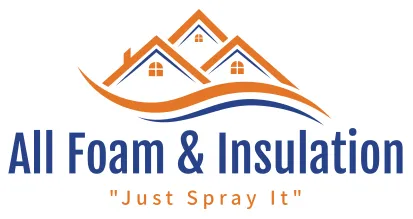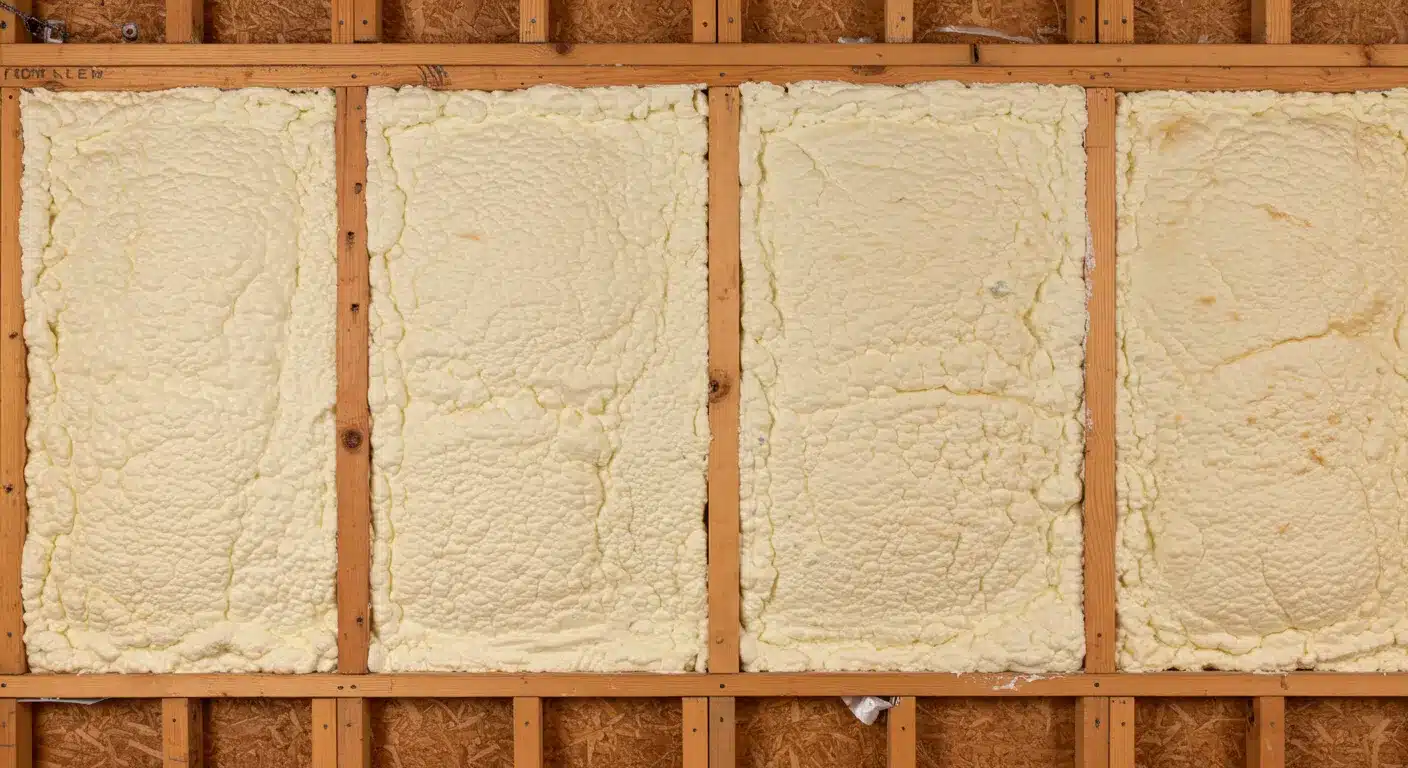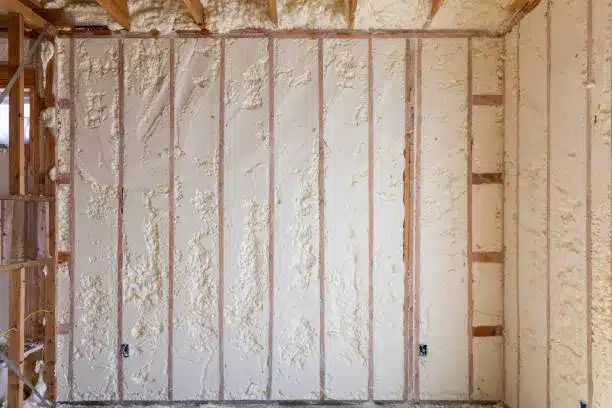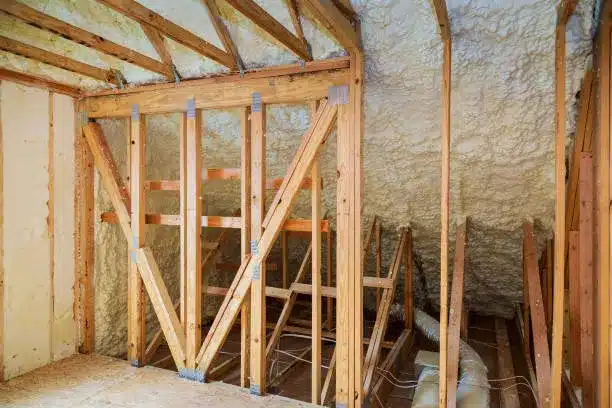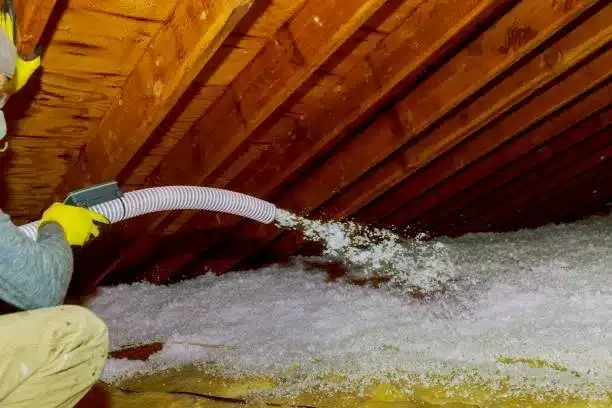Spray foam insulation can reduce indoor allergens in Grants Pass homes and buildings by sealing gaps that allow pollen, dust, mold spores, and other irritants to enter. Closed-cell spray foam, in particular, creates a barrier against outdoor contaminants and minimizes moisture intrusion a key factor in mold development. Unlike traditional insulation types, spray foam adheres directly to surfaces, leaving fewer voids where allergens can accumulate.
Grants Pass, OR experiences variable moisture levels and pollen-heavy spring seasons. Local homes benefit from insulation solutions that limit airborne triggers and resist moisture-related problems. This article provides detailed comparisons, performance specifications, and practical considerations for residents seeking healthier indoor air through insulation.
How Spray Foam Insulation Blocks Indoor Allergens
Spray foam insulation contributes to better air quality by closing off gaps in the building envelope. Air leaks through wall cavities, attic floors, and rim joists introduce allergens. Foam insulation addresses this problem at the source.
Types of Allergens Affected
- Pollen and dust from outdoor sources
- Mold spores encouraged by moisture
- Rodent and insect allergens carried in unsealed gaps
How It Works
- Air Sealing: Prevents infiltration of allergen-laden air
- Moisture Control: Reduces condensation, which limits mold formation
- Continuous Coverage: Eliminates gaps common with batts or loose-fill insulation
Bonus Tip: Use closed-cell spray foam around HVAC ductwork to prevent allergen spread through central systems.
Technical Performance Data
| Feature | Closed-Cell Spray Foam | Open-Cell Spray Foam | Fiberglass Batt | Blown-In Insulation |
|---|---|---|---|---|
| Air Barrier | Yes | Partial | No | No |
| Moisture Resistance | High | Low | Low | Low |
| Mold Resistance | Yes | Moderate | Low | Low |
| Allergen Reduction Potential | High | Moderate | Low | Low |
| Insulation R-Value/inch | 6.0-7.0 | 3.5-3.8 | 3.1-3.4 | 2.5-3.0 |
| Sound Dampening | Moderate | High | Moderate | High |
Things to Consider Before Making a Decision
- Building Age and Condition Older homes in Grants Pass often lack sealed envelopes. Spray foam is most effective when applied during retrofits or major renovations.
- Allergy Severity Households with asthma or allergy sensitivities benefit more from higher air sealing performance.
- Moisture Exposure If your attic, crawlspace, or basement experiences humidity, closed-cell foam’s water resistance makes it the more practical choice.
- Budget vs. Performance Closed-cell spray foam has higher upfront costs but delivers greater long-term allergen reduction and energy efficiency.
Bonus Tip: For Grants Pass homes near high pollen zones (e.g., river valleys or agricultural fields), prioritize insulation at attic and basement levels where air intrusion is highest.
Local Climate Considerations in Grants Pass
Grants Pass has a moderate climate with damp winters and dry, pollen-heavy springs. Seasonal allergens like grass and tree pollen peak between March and June. During this period, unsealed homes can experience a surge in airborne irritants. Foam insulation helps by:
- Minimizing seasonal allergen drift into living areas
- Reducing reliance on air filtration systems
- Supporting HVAC efficiency during pollen-heavy months
Local Insight: Closed-cell spray foam performs better in mixed-humidity zones common in southern Oregon, providing both air and moisture control.
Practical Applications Based on Installation Zones
| Installation Zone | Recommended Insulation Type | Reason for Use |
|---|---|---|
| Attic Floors & Rafters | Closed-Cell Spray Foam | Air sealing + moisture barrier |
| Wall Cavities | Open-Cell Spray Foam | Sound dampening + decent air control |
| Crawlspaces | Closed-Cell Spray Foam | Moisture control + pest exclusion |
| Rim Joists | Closed-Cell Spray Foam | Fills gaps + blocks drafts and allergens |
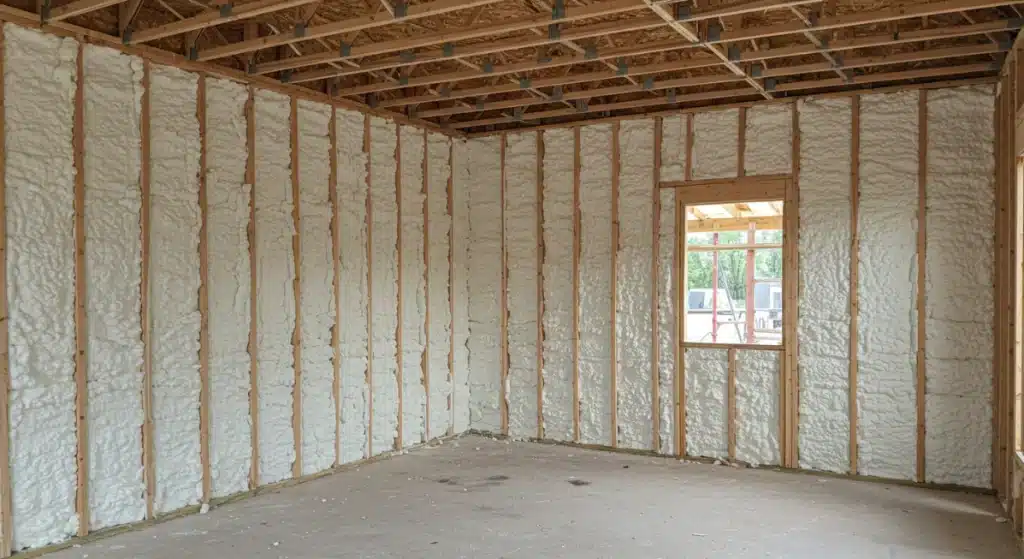
Services Available for Effective Allergen Control
All Foam & Insulation, LLC provides solutions designed to reduce allergen entry in residential and light commercial structures. Based on years of hands-on experience in southern Oregon, the following services are most relevant:
- Closed-Cell Spray Foam: Seals air leaks and blocks moisture, ideal for attics, basements, and crawlspaces.
- Open-Cell Spray Foam: Covers interior walls with semi-rigid fill for moderate air sealing and sound control.
- Fiberglass Batt Insulation: Common in wall cavities; best used with air barrier membranes to reduce allergen pathways.
- Blown-In Insulation: Suitable for attics; may require vapor barrier installation to limit mold potential.
Common Questions About Using Spray Foam for Allergen Reduction
Where should spray foam be applied for the best allergen control?
Attic floors, rim joists, crawlspaces, and wall penetrations are critical points where allergens enter.
Does spray foam eliminate the need for air purifiers?
It reduces airborne allergens but doesn’t replace filtration. Both systems support each other.
Can spray foam grow mold over time?
Closed-cell spray foam resists mold due to its moisture barrier properties when properly installed.
Is spray foam safe for allergy-sensitive individuals?
Yes, once cured. Installers must vacate the area during application, but it poses no risk afterward.
Get Expert Insulation Guidance
Contact All Foam & Insulation, LLC for guidance on reducing indoor allergens through targeted insulation solutions in Grants Pass, OR.
Read more to learn how we’re improving access to allergen-reducing insulation services across Grants Pass and beyond.
- Phone: (541) 826-9600
- Email: [email protected]
FAQ
How long does spray foam insulation last?
Closed-cell spray foam can last 30+ years without degradation if properly installed and protected from UV light.
Will rodents chew through spray foam?
Spray foam is not a food source, and its air sealing limits rodent access, but it is not a rodent deterrent.
What maintenance is required after spray foam installation?
Little to none. Periodic inspections in high-moisture zones ensure longevity.
How does insulation reduce allergy symptoms?
By blocking outdoor allergens and minimizing indoor mold sources, reducing common triggers.
Can it be installed in homes with existing insulation?
Yes, foam can supplement or replace existing materials depending on the application zone and insulation goals.

